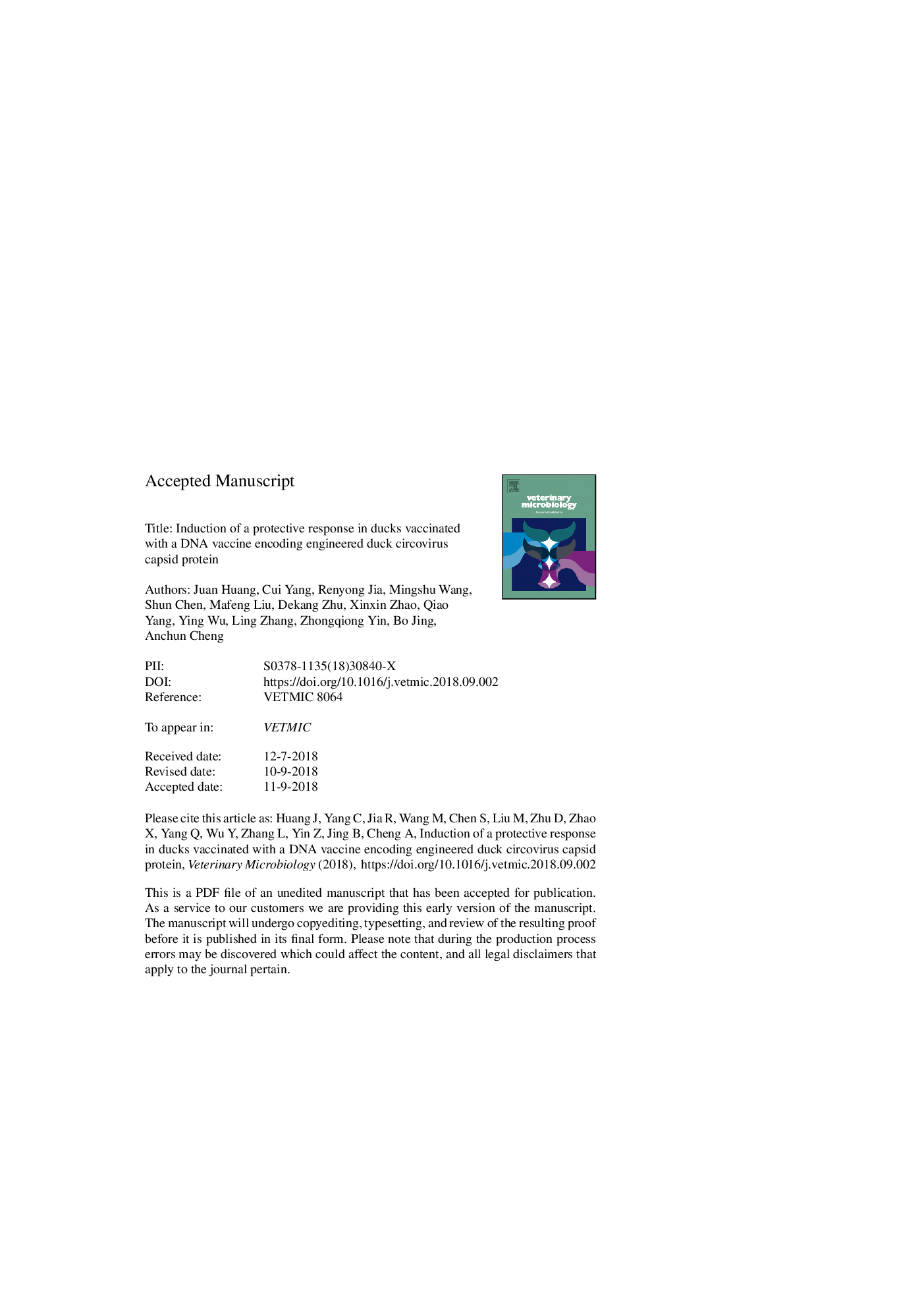| Article ID | Journal | Published Year | Pages | File Type |
|---|---|---|---|---|
| 11025817 | Veterinary Microbiology | 2018 | 28 Pages |
Abstract
Duck circovirus (DuCV) is an immunosuppressive pathogen that causes a huge economic loss in the avian industry. Efficient vaccination has become a necessary strategy for preventing DuCV infection in the breeding industry. Three DNA vaccines encoding the Capsid (Cap) protein of DuCV were developed in this study, which were based on the eukaryotic vector pcDNA3.1 containing (i) the full length of Cap gene, pcDNA3.1-Cap, (ii) the Cap gene with a deletion of its nuclear localization signal (NLS) peptide encoding sequence, pcDNA3.1-CapÎNLS, and (iii) the Cap gene without NLS but harboring a fragment encoding the secretory signal peptide of tissue plasminogen activator (tPA), pcDNA3.1-tPA-CapÎNLS. Production of Cap protein-derived antigens from these three DNA vaccines was confirmed in vitro. The deletion of the NLS coding sequence of the Cap gene changed the subcellular location of the Capsid protein from the nucleus to the cytoplasm. Secretion of the Cap protein was observed in pcDNA3.1-tPA-CapÎNLS-transfected cells. The immunogenicity of these three DNA vaccines was assessed in vivo by measuring Cap-specific antibody and related cytokine levels. The results demonstrated that all these vaccines could induce a significant, specific immune response to protect ducks from DuCV challenge. Notably, higher titers of Cap-specific antibody were produced in ducks vaccinated with pcDNA3.1-tPA-CapÎNLS, which provided the highest protective efficacy at a rate of 90% in the challenge experiment. Taken together, DNA vaccines expressing the DuCV Cap protein show promising immunogenicity, which can be enhanced by replacing the NLS of the Cap protein with a secretory signal peptide of tPA.
Keywords
Related Topics
Life Sciences
Agricultural and Biological Sciences
Animal Science and Zoology
Authors
Juan Huang, Cui Yang, Renyong Jia, Mingshu Wang, Shun Chen, Mafeng Liu, Dekang Zhu, Xinxin Zhao, Qiao Yang, Ying Wu, Ling Zhang, Zhongqiong Yin, Bo Jing, Anchun Cheng,
